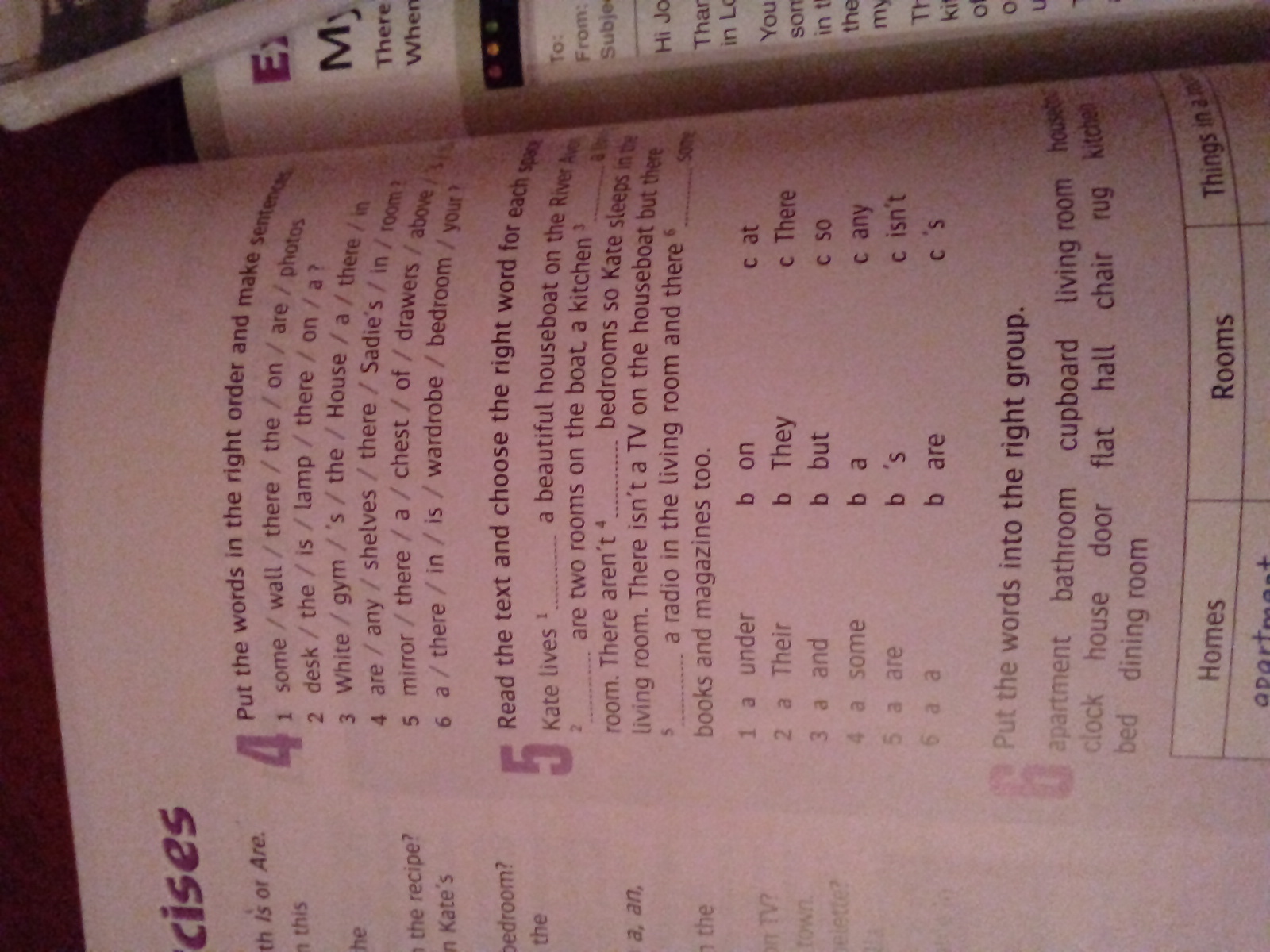Предмет: Английский язык,
автор: Madikosh11
пажалуста дам много балов
Приложения:

Ответы
Автор ответа:
2
4.
1) There are some photos on the wall
2) There is a lamp on the desk
3) There is a gym in the White House
4) Are there any shelves in Sadie's room?
6)Is there a wardrobe in your bedroom?
1) There are some photos on the wall
2) There is a lamp on the desk
3) There is a gym in the White House
4) Are there any shelves in Sadie's room?
6)Is there a wardrobe in your bedroom?
whitemoon13:
1) at. 2) There. 3) and 4) any 5) 's 6) are
че это
5 упр
пж помагите
пж
Это и есть пятое 1) at. 2) There. 3) and 4) any 5) 's 6) are
ааа спосибо
:)
теперь я дам вопрос опять блин домашка алгебру еше нужно мвтематику наконето зделала
спосибо вам
Похожие вопросы
Предмет: История,
автор: artemka2022
Предмет: Геометрия,
автор: mtbakumenko
Предмет: Русский язык,
автор: Sonya4565
Предмет: Английский язык,
автор: druggostya
Предмет: Биология,
автор: vikaviktoriyk1